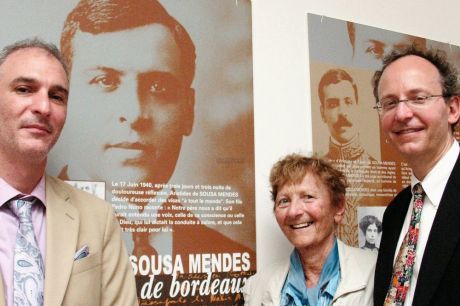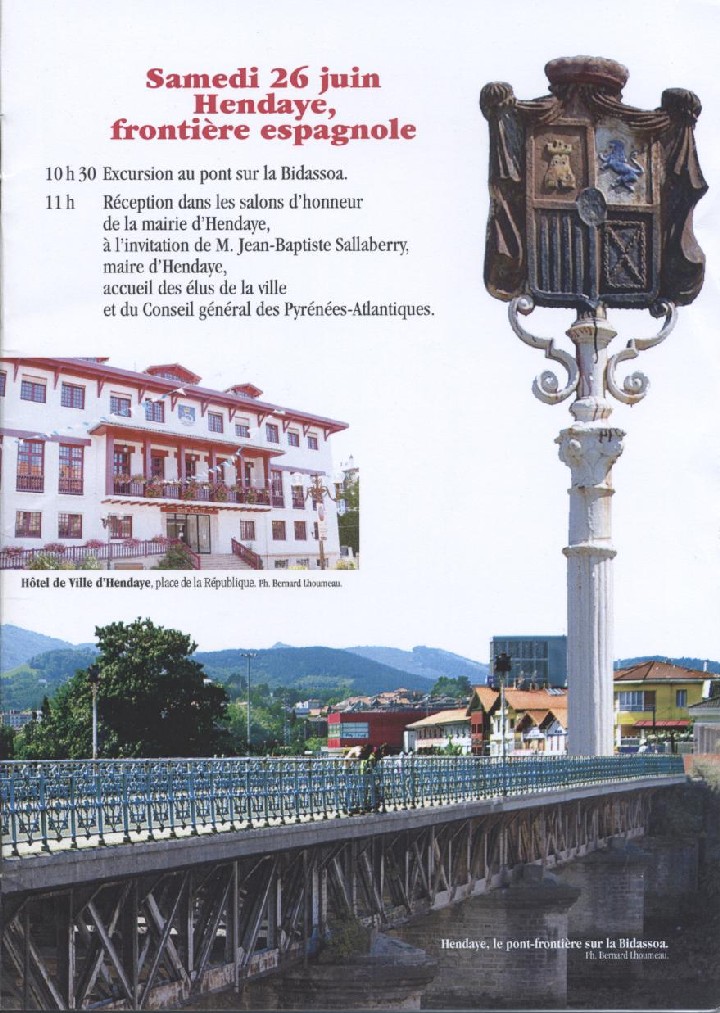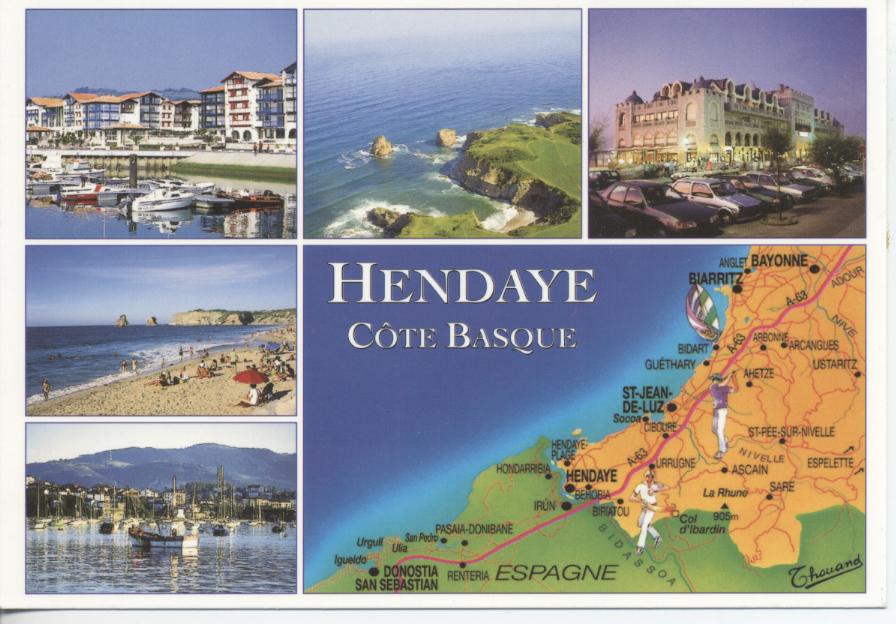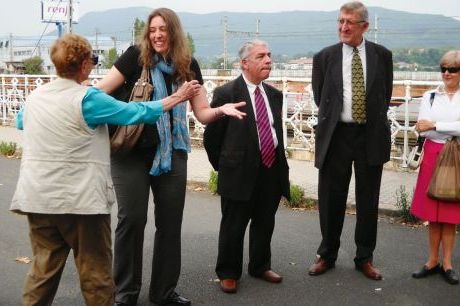The last day of our journey together begins with breakfast in the hotel lobby. The morning issue of Sud-Ouest (Pays Basque edition) carried a very nice article written by Véronique Fourcade, who interviewed several of us in the Basque Museum yesterday. The article was titled 'La grande famille du consul Souza Mendes' and included a photo with the Jarviks and myself. Jacqueline Cancel, our local member of le Comité national français en hommage à Aristides de Sousa Mendes, kindly went out to buy several extra copies for us. PDF: 'La grande famille du consul Souza
Mendes' |
|
The group boarded a charter bus to Hendaye, the border town where the refugees crossed into Spain. Along the way, we passed some scenic viewpoints, campgrounds and vacation resorts overlooking the rocky shores of the Atlantic. At Hendaye, the refugees headed to Portugal had to disembark from the trains on the French side of the river Bidassoa, walk across the bridge to board different trains on the Spanish side, because the rails they used were of a different gauge. Lissy Jarvik recalls being afraid when they were told to leave the train that they were being denied entry into Spain, but in fact she, her sister, and parents walked across the bridge 70 years ago on June 23, 1940. |
|
We were met at the bridge (pont sur la Bidassoa) by Manuel Diaz and Basque historian Andoni Etxarri. We stood in a circle at the north end of the bridge as Manuel addressed us with tears in his eyes, and M. Etxarri sang a Basque song of the Resistance. Ana Margarida spoke eloquently in Portuguese and English; she spoke about her feelings standing in front of a photo of her great-grandfather, Aristides de Sousa Mendes, yesterday at the Basque Museum, and feeling like he was watching her over the gulf of time. She made the analogy of the refugees crossing the bridge between past and future, beginning a new life, and leaving behind fear, and the passage she is making in her own life – a feeling I think we could all identify with as this journey is a turning point in all of our lives. |
|
Excerpt from original journal entry, written 26-June-2010 I could not have anticipated the emotional impact of standing there on this very bridge, where my father and grandparents made their own crossing to freedom and safety, fleeing from persecution, from barbarity and racism, from the terrible likelihood of extermination in Nazi death camps aimed at erasing the existence of entire peoples… I was sobbing, wracked with emotions from the very depths of my soul, as I walked across the bridge. On the far side, blinking away tears as I looked at the mountains that may have symbolized hope to my father, the child Arthur with a whole life ahead of him, I felt my love for him as deeply and profoundly as I ever have. I knelt on the ground, pulled out the photos I brought of Jacques, Kate and Arthur from 1939, and I kissed them. I know they would be proud of me for making this journey, this amazing tribute to their memory, and to the memory of the great man whose determination, moral strength and human fortitude was a fountain of life for so many of the persecuted, Aristides de Sousa Mendes. |
|
|
Patricia Stenger gently urged me to pick up some stones from the bridge, which I will place on the grave markers of Arthur, Kate and Jacques when I next visit the Rose Hills/King David cemetery in Putnam Valley, New York. The last time I was there, we were burying the remains of my sister Milena, and I played and sang 'Hallelulah' by Leonard Cohen. There is also a marker there for my mother, Tybee. |
|
Subsequently, Sud-Ouest published another article about our excursion to the bridge, the title of which translates to "The bridge on which hope and despair mix." The accompanying photo shows Lissy hugging Ana Margarida with great emotion as she finished her speech. Édith Anselme wrote "the tears still ran on the Bidassoa." PDF: 'Le pont sur lequel espoir et désespoir se
mêlent' |
|
Bleary eyed, all of us, we went to our final reception at the Hôtel de Ville of Hendaye. In the lobby there is a memorial plaque honoring Aristides de Sousa Mendes, made of stone from the nearby mountains, which will be installed on the bridge when renovations are complete. |
|
A gorgeous musical interlude was staged, featuring two Basque musicians, first blowing through conch shells and then cooperatively playing a txalaparta, a large percussion instrument made of long wooden planks. The sound of the conch was very soothing, as were the gentle rhythms of the txalaparta. Everyone in the room was completely still, appreciating the mood of this performance. It was a demonstration of sensitive artistic collaboration. We later learned that each piece is improvised and composed for the occasion; these musicians captured the essence of the moment we were sharing in a memorable way. |
|
| The honorable mayor Jean-Baptiste Sallaberry welcomed us, and Manuel made the most passionate and stirring speech I have heard him make this whole week. My comprehension of French has increased so much during this voyage from listening intently to Manuel every day. He is a heroic figure to me, an example of commitment and vision, and I will miss him very much even though our direct communication has mostly been through the eyes and the touch of a hand. (Manuel doesn't speak a word of English.) | |
During the reception, I presented Hellen Kaufmann with my father's poetry book, "I Wanted To Say Something About How Essentially Beautiful Life Is But I Forgot What" - one of my last few copies. Still choked up with tears, I told her, "For almost thirty years I have studied this book. I studied it, and in this week I have found more answers than are contained in it. Thank you." |
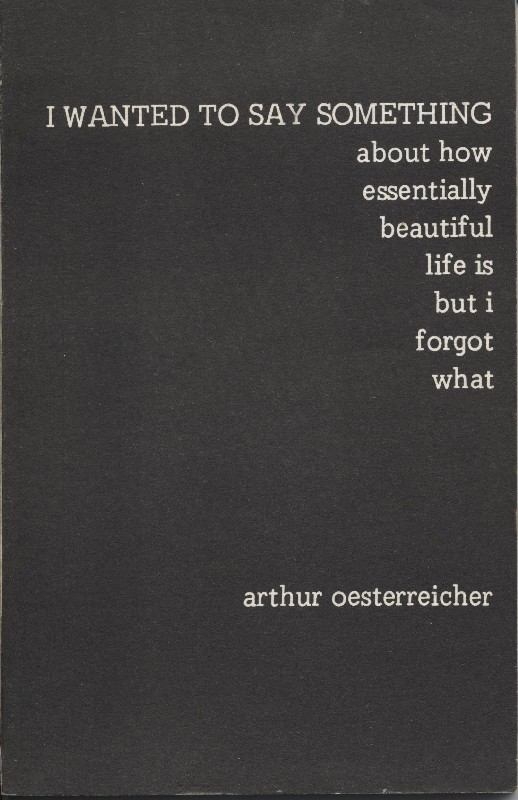 |
Excerpt from original journal entry, written 26-June-2010 I want to express my profound gratitude to Manuel Diaz, Hellen Kaufmann, Georges Bouhana, Jacqueline Cancel, the other members of le Comité national français en hommage à Aristides de Sousa Mendes, the volunteers who assisted them, and everyone who shared the voyage with us, and most especially the descendants of Aristides (both literally and figuratively) whom I have grown to love as my very own family of the heart. Most of my life I have searched for answers to the questions of the past, how and why it is that I came to be born into this world, and I have found many of those answers, quite unexpectedly, here in France in June, 2010. And in the lifelong quest for love, compassion, acceptance, and understanding, I have never felt more rewarded than I do now, writing this report on the return train to Paris. Long may the story of Aristides de Sousa Mendes be told, may it reach around the globe just as the results of his actions has made an impact on the entire world. May it serve as an example, a moral compass, a beacon of hope, of justice, righteousness, compassion, of all the virtues of humanity, for generations to come, and may this memory be enshrined forever in the pages of history. |
